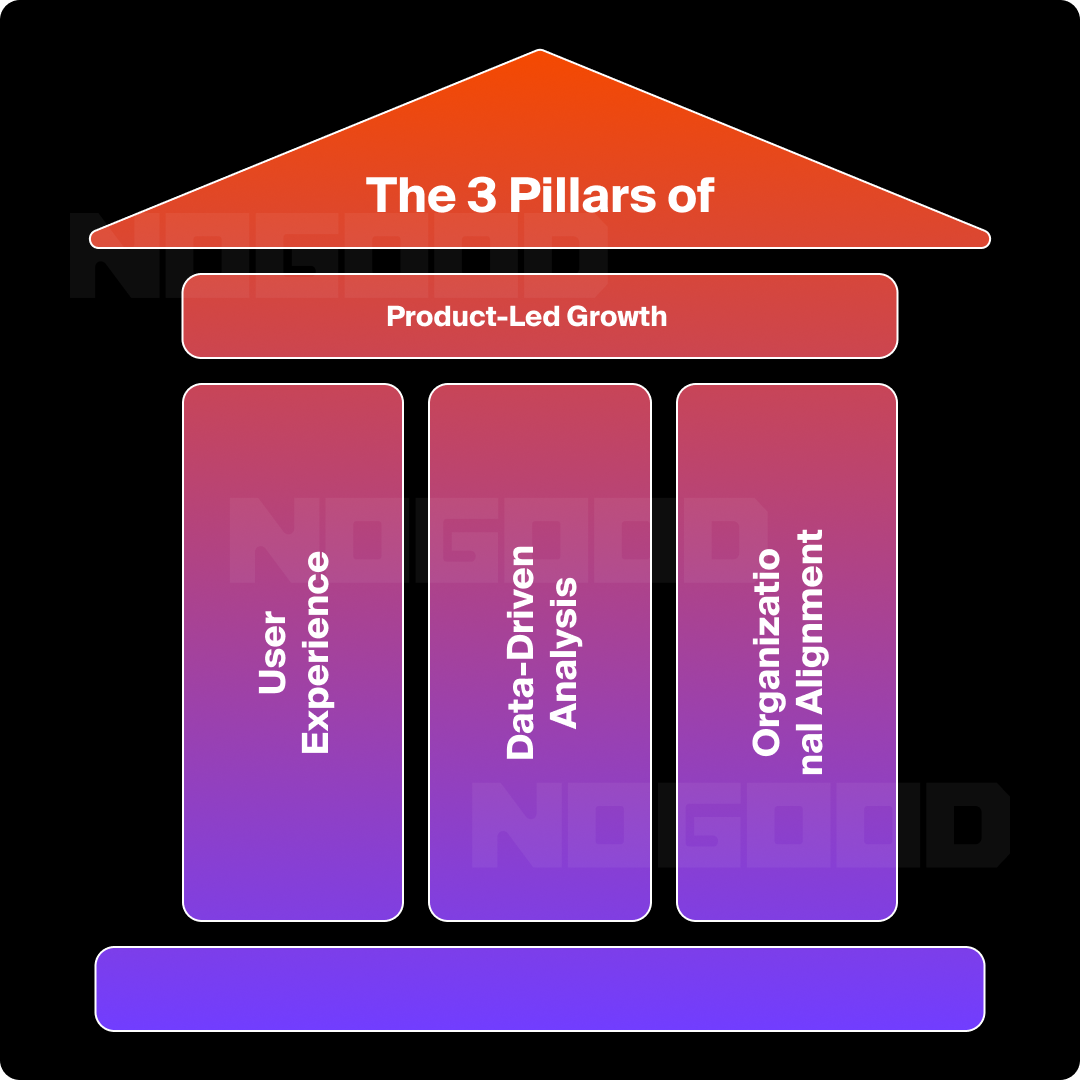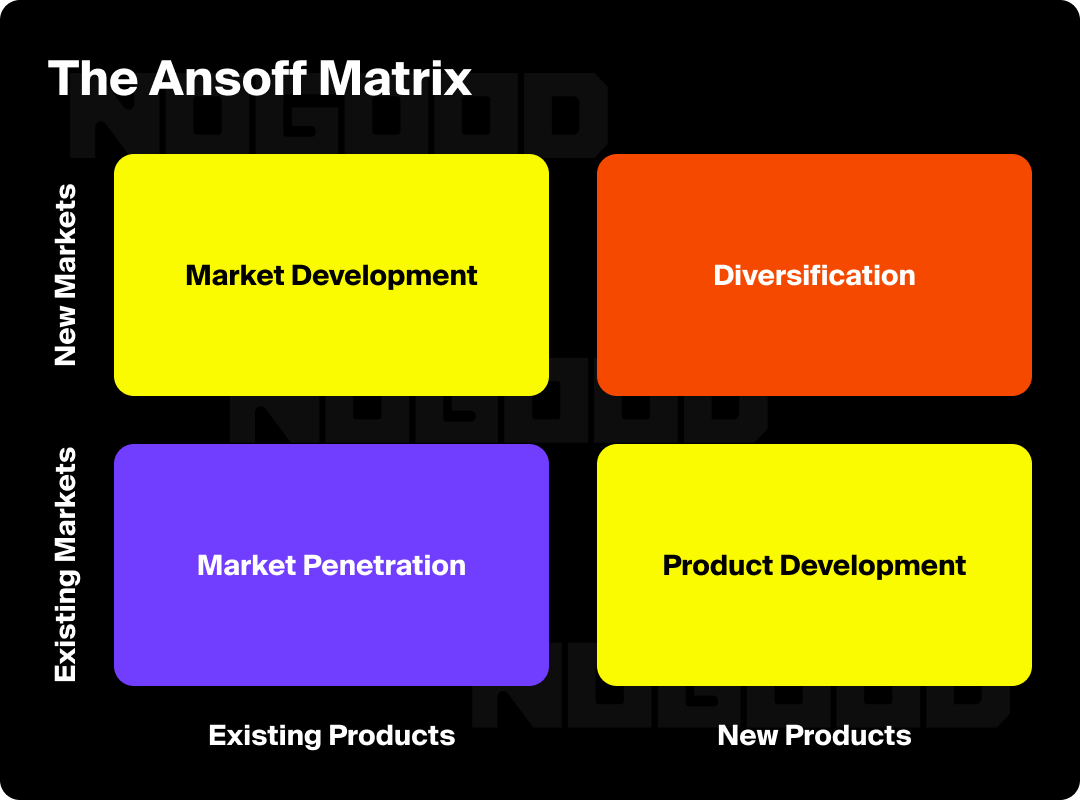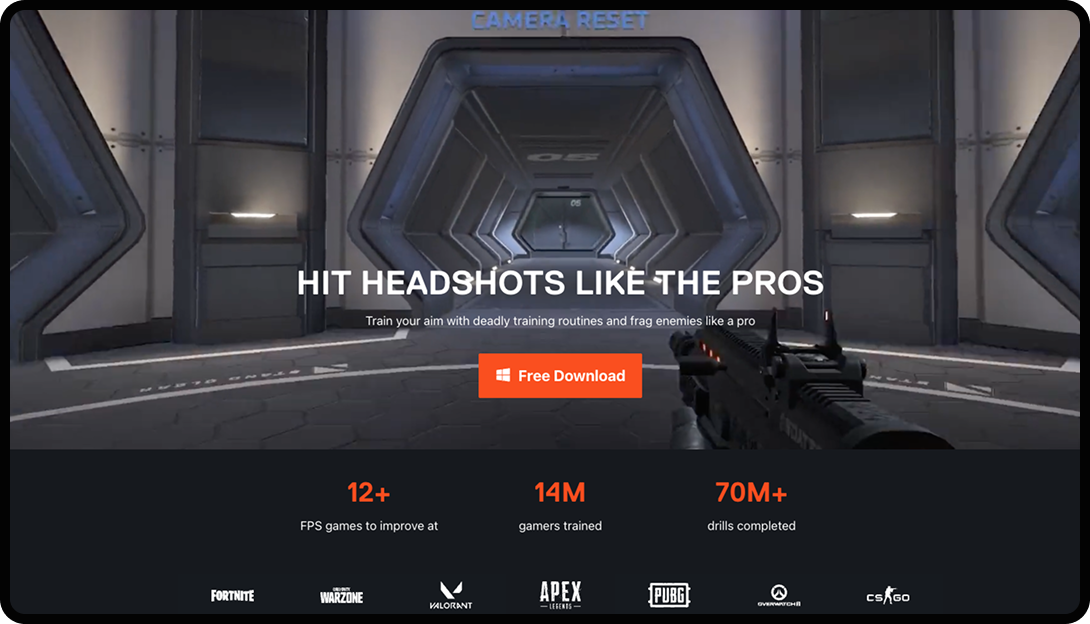From looms replacing textile workers, to machines taking over for humans on the automobile assembly line and ATMs displacing bank tellers, technology rarely loses to people over the long term. This evolutionary efficiency process repeats itself over and over again.
Expecting another AI marketing blog now? Sorry, not here. Let’s look at another type of evolution: from sales-led growth to product-led growth (PLG).
What Is Product-Led Growth?
Traditionally, SaaS and digital products required a robust sales team, generally supplemented by a healthy marketing budget, to produce growth at scale. Those expensive suites at the ballpark and rounds on the golf course moved the process along at a slow pace as salespeople tried to “reel in the big fish.”
As technology advanced, product-led growth entered the scene, offering scalability at a fraction of the cost. PLG allowed companies such as Facebook (which became Meta), Slack, Shopify, Zoom, and others to turn into unicorns, achieving billion-dollar valuations in a shorter period of time than their founders ever could have imagined.
PLG is an approach where the product itself serves as the primary driver of customer acquisition, retention, and expansion.

Now that we’ve defined PLG, let’s look at the basics of a PLG-based growth strategy, how it works, why it matters, and how to build a product-led growth engine for your business.
What Is a Product-Led Growth Strategy?
PLG strategy puts the product in your customers’ hands with minimal friction, allowing them to grow into higher revenue generators as their usage expands. This builds both brand and product trust quickly by allowing users to experience real value early, rather than sitting through sales demos or needing to sign a contract before testing out the product. PLG functions as a test drive of sorts, only there’s no risk of the customer crashing the car while driving around the block.
In fact, this test drive enables users to spearhead lead gen for you by sharing the product and bringing other potential paying customers into the fold via word of mouth and your product’s built-in sharing options. This drives down customer acquisition costs, as you let users of all phases (free trial, freemium, premium, etc.) enjoy your product to the point that they can’t help but want more, at which point your more efficient, leaner sales team can jump in if necessary to drive incremental revenue.
Companies like Slack, Notion, and Dropbox serve as great examples. Users can start using these products with minimal friction, experience immediate value, and naturally progress to paid plans as their needs grow. The product serves as more than a tool—it’s the salesperson, the marketer, and the customer success rep all rolled into one.
By focusing on a seamless user experience and providing inherent value from the outset, these companies have not only attracted a broad user base, but also fostered strong communities that contribute to continual product improvement and further growth.
What Are the Three Pillars of Product-Led Growth?

So, how do you build a product-led growth strategy? PLG thrives on three fundamental pillars that make the model work. If one pillar fails, the whole structure will crumble, so make sure your entire business supports the mission.
1. Your Product’s User Experience
The most important currency in PLG is the user’s product experience. This goes beyond clean UI and page speed. The entire journey—from onboarding to habit-forming usage—must focus on making the user’s life better. Every moment should guide users toward value. Think of your user experience as a series of micro-wins that reinforce product value over time.
When users realize all the ways that a Slack conversation one-ups an email chain, they never want to go back. Then, as they learn more about integrations and fun features the app offers, they refuse to go back, serving as product advocates.
2. Understanding Product Usage to Measure Value
Qualifying leads can prove a taxing, though worthwhile, endeavor. Employing your product to lead the process over a salesperson can provide otherwise impossibly massive scale.
Enter the concept of product-qualified leads (PQLs). When users hit specific milestones in your product (e.g., completing onboarding or using a key product feature multiple times) they’ve signaled high intent. At this point, you can hit them with the right upsell to push them to the next tier in your account hierarchy.
Most businesses will show reticence to spend to the max tier before truly testing out a product, so qualifying the accounts that have a high likelihood of converting without initial sales involvement increases efficiency tremendously, dropping your costs.
Creating a killer piece of software that attracts users often requires large upfront investment. However, after that initial investment, the cost per additional user drops precipitously, approaching zero at scale. On the other hand, every sales lead requires time and nourishment, so adding users to your funnel without a salesperson serves as a major win.
What indicators suggest you’ve found a PQL? A PQL will have:
- Experienced product value, such as having:
- Created a project or workspace
- Uploaded a file
- Connected a team member or integration
- Reached the “aha!” moment (like sending a message in Slack or editing a doc in Notion)
- Actively, repeatedly, and meaningfully used the product through:
- Multiple logins within a day or week
- Returning after Day 1, 3, and 7
- Engaging with core product features consistently
- Shown signs of scaling, like team use or feature depth:
- Inviting multiple users from the same domain
- Collaborating within shared workspaces
- Assigning admin or decision-maker roles
- Interacted with upgrade flows or pricing content:
- Ran out of credits, projects, or seats
- Viewed pricing or settings pages
- Tried to access premium features
3. Cross-Functional Alignment
PLG necessitates organizational alignment. If sales believes you plan to replace them with the product, you’ll have to literally replace them as they flee to other jobs. If the product team doesn’t think growth should be its North Star, PLG won’t work.
All departments must focus on growth through the product and share KPIs. The product is the centerpiece, and every team plays a role in improving it.
Without proper alignment, your organization will fail to:
- Understand which features drive engagement
- Prioritize the best roadmap decisions
- Identify bottlenecks in adoption and expansion
This unified analysis is the only way to find success with PLG.
PQLs often show intent outside of the product, as well as within, by clicking upgrade-related emails, interacting with help docs or pricing FAQs on the website, or exploring integration or API web pages.
Incorporating the data that comes from outside the product increases your likelihood of properly identifying PQLs. Without full-scale organizational alignment, this level of data input into your model won’t take place, resulting in a decrease in efficiency and a longer time to value.
What Are the Four Growth Strategies?

Every company, whether product-led or sales-led, grows in four primary ways:
1. Market Penetration
We can sum up market penetration as acquiring more users or customers in your existing market. In PLG, this often means driving more adoption within freemium tiers or expanding user accounts.
2. Market Development
If you’ve reached your original total addressable market and want to expand, you can try to reach new markets with your current product—presuming the fit makes sense. This could mean launching in new geographies or verticals, or targeting new personas.
3. Product Development
Perhaps your product has done outrageously well within its constraints, but lacks a key feature that competitors use to close deals or expand usage. At this point, introducing new features or add-ons that drive upsells and retention can push your user base up.
4. Diversification
If you’ve reached the product diversification phase, give yourself a pat on the back. While this step may require the most effort, it should mean you’ve already maxed out your market penetration, market development, or product development efforts.
This level of success can necessitate creating entirely new products for new audiences, but you’ll have the playbook for growth after navigating steps 1 through 3.
What Are the Stages of Product-Led Growth?

PLG strategy puts the product in your customers’ hands with minimal friction and allows them to grow into higher revenue generators as their usage expands.
Let’s take a look at the five stages of this PLG strategy:
1. Acquisition
Users discover your product through organic search, content, referrals, or social proof. You help by making sign-up easy and inviting.
2. Activation
The onboarding process helps users experience the product’s core value quickly. Your “aha!” moment—when users discover they need your product to solve a pain point—should sit front and center.
3. Retention
How sticky of a product do you have? Do users regularly come back to your product? Do they receive value that builds usage habits?
4. Monetization
Here, you push users experiencing great value from your product up a tier from a free trial or freemium plan to a paid plan. Make pricing clear, flexible, and tied to the value you provide your users.
5. Expansion
We’ve reached the best stage of PLG. As users invite teammates or expand usage, they generate more revenue with no additional acquisition cost.
Now, let’s move on to PLG best practices.
Best Practices for a Successful Product-Led Growth Strategy
Focus on these six areas of PLG and you may find yourself breezing through each phase of the four growth strategies that we examined above:
1. Make Sign-Up Frictionless
Ask only for what you need, when you need it. Offer SSO or Google login to avoid any drop-off at step one.
2. Personalize Onboarding
Introduce and showcase product features when they are most relevant, not in a big functionality dump right when the user tries your product for the first time.
3. Prioritize Core Feature Adoption
Focus on helping your users succeed with a few essential tools that you know deliver the “aha” moment ASAP. Think of when you learned to ride a bike—did you have to worry about switching gears or navigating rough terrain on day one?
For your sake, let’s hope not, and let’s make sure your users don’t need to wade through TMI before feeling the value your product provides.
4. Turn Data Into Action
Create behavioral cohorts and customize in-product messaging accordingly, so you give users only what they need when they need it—and nothing more.
5. Celebrate Wins
Use gamification, streaks, badges, or summaries to show users how they’ve progressed and provide encouragement to keep up their efforts.
6. Align Sales to PLG
Use product usage data to identify high-intent users and accounts with high-revenue possibilities to offer helpful human-led nudges at just the right time.
Product-Led Growth Strategy Examples
Now, let’s dive into some examples of product-led companies who’ve employed a successful PLG strategy, and the tactics behind their success.
SteelSeries: Merging Hardware & Software
SteelSeries has mastered PLG by connecting industry-leading physical products (headsets, mice, keyboards, etc.) with powerful gaming software.
SteelSeries’ software suite offers users real, immediate value. Moments lets users capture, clip, and share their favorite gaming instances. Sonar allows gamers to improve their performance by tuning their devices to the point where they can hear sounds other gamers miss and one-up the competition. SteelSeries even offers a 3D Aim Trainer program that matches the user’s intended game settings and weapons.

These tools work to bring in new users and push them toward becoming “Steelheads,” SteelSeries’ most loyal customers, because:
- They’re free to use
- They create excellent reasons to return to the app
- They build community through shared content.
SteelSeries’ software increases brand stickiness and drives hardware loyalty.
Slack: The Viral Loop
Slack nailed the “invite loop.” Users join one workspace, love it, and spin up new ones elsewhere. This network effect, combined with their freemium model, fueled massive growth.
As anyone who has used the platform knows, the immediate positive experience in your initial workspace acts as a powerful endorsement and referral mechanism. Transitioning to Slack from email chains, where finding information proves nearly impossible, immediately triggers the desire to move all your work conversations to the more agile option.
Add integrations and tiered plans to push organizations along the funnel toward enterprise deals, and Slack’s sale for nearly $28B comes as no surprise.
Notion: Community & Simplicity
Notion’s growth engine stems from simplicity and a thriving community. Its clean interface, flexible and customizable blocks, and all-in-one workspace turned everyday users into evangelists.
The real magic? Templates. Early adopters didn’t just use Notion, they shared their workflows, building a thriving ecosystem of free resources that spread product adoption like wildfire.
Whether for managing a startup roadmap or a reading list, Notion’s low-friction onboarding and powerful customization options hooked users fast. With a freemium model and organic word-of-mouth as its core strategy, Notion let its community enjoy simplicity and functionality as it scaled from niche tool to over 100M users.
Is Product-Led Growth Strategy Right for Your Business?
For PLG to work, your enterprise can’t deploy it as a tactic—you need to make it a company-wide mantra. You’ll require cross-functional commitment to using and aiding your product as a growth engine. But, before you take the leap to becoming a PLG organization, prepare your product for the role. Develop your product to the point that people can’t stop using it.
Reduce friction, provide immediate value with an “aha” moment, turn users into advocates, and watch your customer base soar.
Need help creating a PLG roadmap? Let’s talk.







